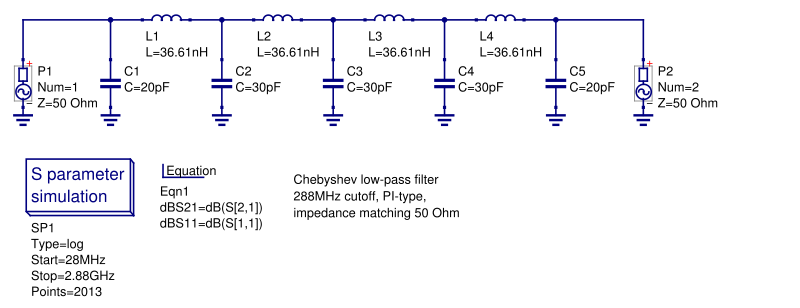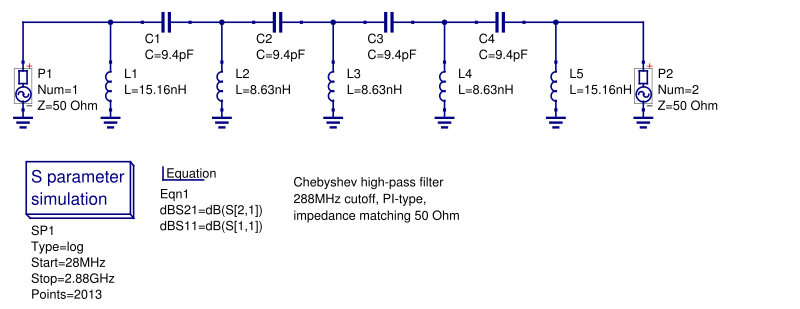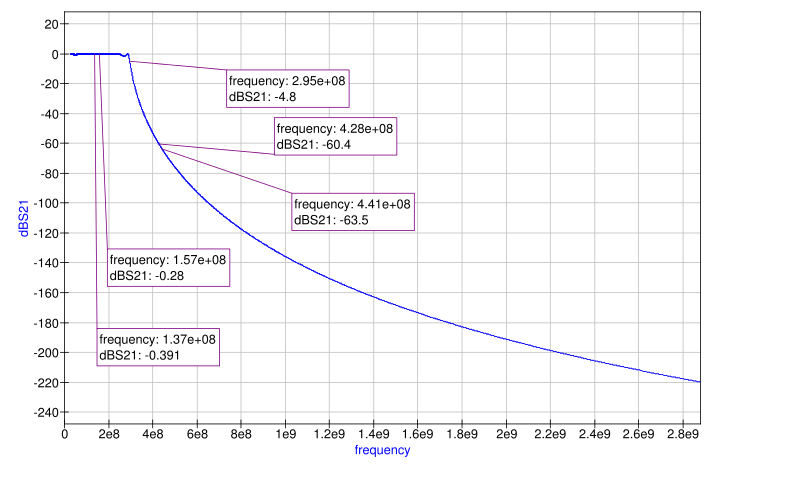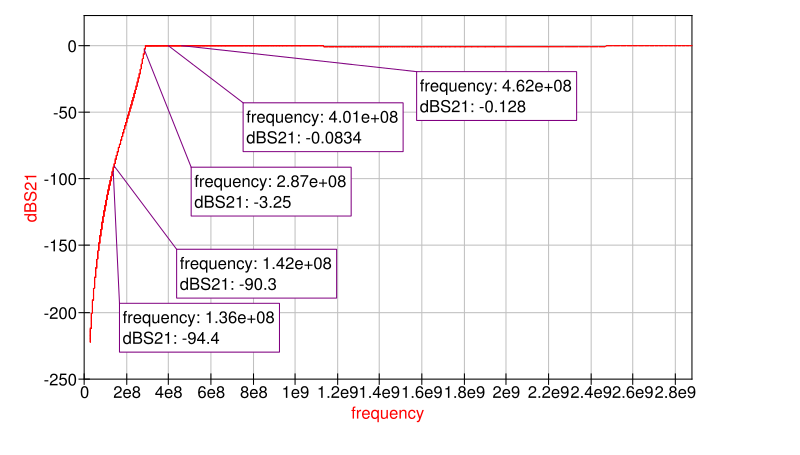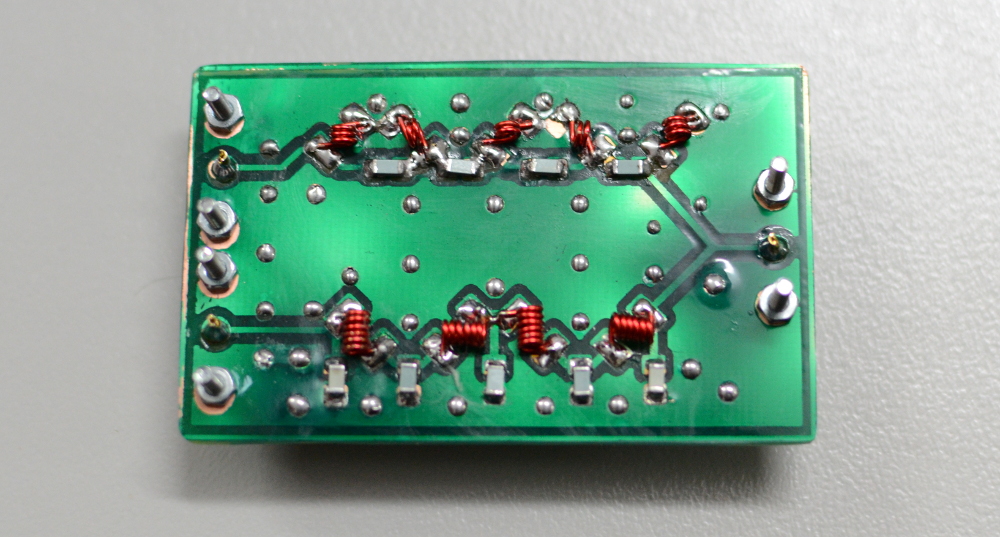We’ve been thinking for some time that there is no need to install two separate RTL-SDR dongles to cover both VHF and UHF. It increases power consumption on WR703N without actually having any benefit, as using two dongles simultaneously is limited by the CPU power and network bandwidth.
A diplexer would allow the connection of a single dongle on both antennas. After studying the theory behind filters, we decided to implement a pair of Chebyshev filters. This type of filter has very steep roll-off and the maximum ripple can be a design parameter.
The two filters, a high-pass to attenuate the VHF band and a low-pass to attenuate the UHF band, should be crossing at exactly 288MHz@-3dB. Attenuation on each band should be at least 50dB. We calculated that a 9-pole Chabyshev filter would match these requirements and started designing a prototype on Qucs. Qucs is an open source circuit simulator which helped us verify that our calculations are correct.
LPF
The LPF has a maximum insertion loss of 0.4dB in VHF. The attenuation in UHF is more that 60dB. Some ripple can be observed on the chart, but it should not affect reception of narrow band signals.
HPF
The HPF has a maximum insertion loss of 0.2 dB in UHF. The attenuation in VHF is more that 80dB.
Special care has been taken to ensure minimal cross-talk between the two filters. The bottom layer of the PCB is a complete ground plane and two copper shieldings have been solder on top of each filter.
Please note, that this diplexer can be used only for receiving. For transmission, a higher grade of components (high voltage caps, high current inductors) should be used.
All source files can be found in our github repo here.
More pics from the diplexer can be found here.

